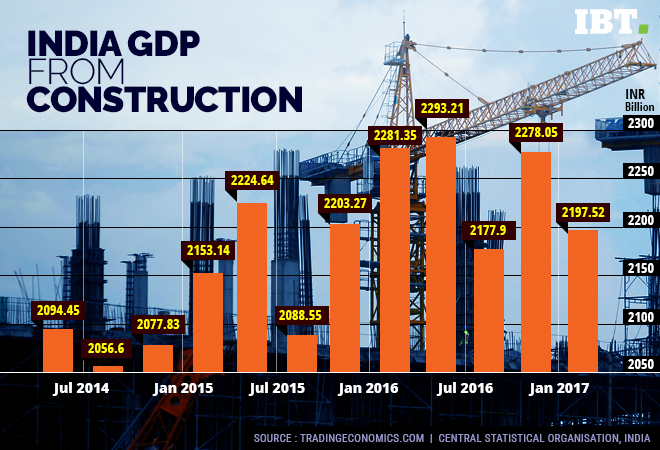
The red carpet rolled out to new home buyers through RERA or the Real Estate (Regulation and Development) Act, 2016, earlier this month is rather dusty, maybe muddy as well.
Demand-supply mismatches continue to plague the high-end and luxury segments of the sector. High inventory backlogs and sales crunches have plagued the broader market for much of 2015 and 2016. Residential sales registered a brief comeback only in the months of July and August 2017, preceding monetisation, before reverting southward.
Builders who currently hold huge inventories of unsold apartments, feel that RERA will impact their entire ecosystem comprising financial firms, banks and investors. That said, the drop in buyer sentiment since April last year has been as galling as the many real estate barons in states like Maharashtra and Karnataka dragging their feet on registering their firms under the new RERA Act. Or, the attitude of a majority of states who either shunned the legislation or battered its underframe beyond recognition with disruptive amendments to key provisions of the Act.
While RERA has apparently been trusted by the real estate industry at large through a slew of positive announcements about the Act helping to boost transparency and accountability from developers, post the enforcement of RERA as well as GST, the developers will have a lot more to do, besides realigning their marketing strategies through incentive bundling to boost sales.
Home is yet far away
The "home sweet home" adage which builders sell to consumers is a byword for disappointment – buyers have seen more or lesser number of floors (minus that upmarket club house fringed by "evergreen forest") than promised by the developer, foundations which are not built to accommodate constantly changing building plans and other myopic planning, lesser floor space than claimed; or, even much smaller flats than the ones advertised, which are often not delivered on time. Not to mention, builders simply bolting with the buyer's money.
Promised homes not being delivered on time has led to buyers being forced to pay rents on their existing dwellings on top of EMIs on home loans taken to book the new home. Or, forced to adjust with outright builder cons like leaking roofs and smaller houses.
Falling consumer sentiments and sales have become an algorithm which developers are finding tougher to crack than ever. It might be a tad tempting to say that developers can gauge the depth of the muddy waters they find themselves in -- after all, they largely created it themselves.
RERA aimed its crosshairs at the heart of the muddy waters – the states, where political and power equations were built on the nexus between builders and politicians. But the states were given a free hand when it came to framing operational rules. And, they mucked up the regulatory waters with unsurprising alacrity by diluting key provisions of RERA.
A majority of states still haven't notified the operational guidelines yet. As of May 1, only 13 states had notified rules under RERA, most of them heavily diluting provisions aimed at empowering the consumer. Four of the most important provisions which were targeted for dilution or deliberate flummoxing relate to the definition of ongoing projects (intended to reduce the number of delayed projects), penalties for non-compliance with RERA, liabilities for structural defects on builders for homes less than 5 years of possession and the provision for a separate bank account (escrow) which allows a builder to use money for a project only according to what proportion of the project has been completed.
The drop in clarity and range of the RERA Act released by the central government after the states are through with diluting its operational rules raises questions on whether the Act will nail its intended targets. Or, if the targets and those who framed the new rules at the state level are largely the same.
Persistent headwinds
A lot of the near-term pain in the sector will be unavoidable if issues like ensuring uniformity in dealing with the regulatory headwinds caused by structural defects, penalty costs on delayed projects, norms for escrow withdrawal and penalties for non-compliance are not addressed. High costs continue to deter customers from going the whole hog on purchases. The myth that lower interest rates can lead to higher absorptions of credit in the real estate sector continues to persist in the collective financial consciousness. The Reserve Bank of India is its prime votary. But successive interest rate reductions have not really seen a significant rise credit offtake in the real estate sector.
Many of the dilutions of the RERA Act guidelines by different states only reflect the insecurities of the developers and the political class, many of whom are prime stakeholders in various real estate projects. These developers will be making intrinsic changes to their business structure, operations and marketing strategies to comply with RERA norms, leading to new launches in the residential sector remaining restricted over the next two to three quarters.
Any delay in setting up regulatory infrastructure could impact the operations of real estate developers, especially in the case of new project launches. Developers cannot commence sales until all project approvals are obtained. While consumer demand will remain restrained in the first half of the year, the real questions relate to delivering lasting value for the customer and if she stands a chance of getting it.

















